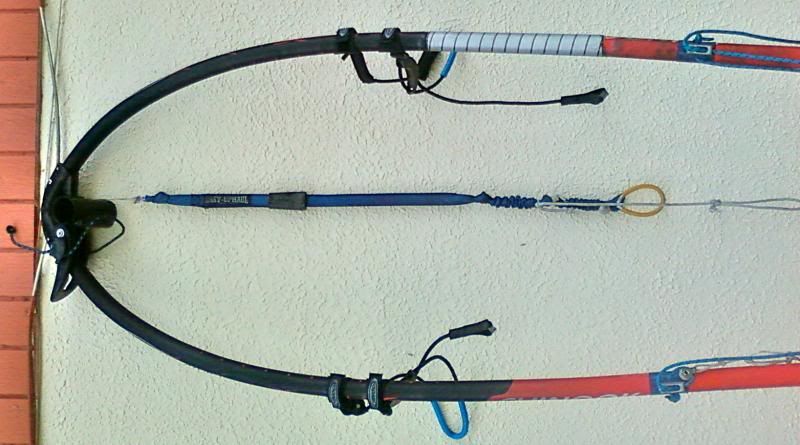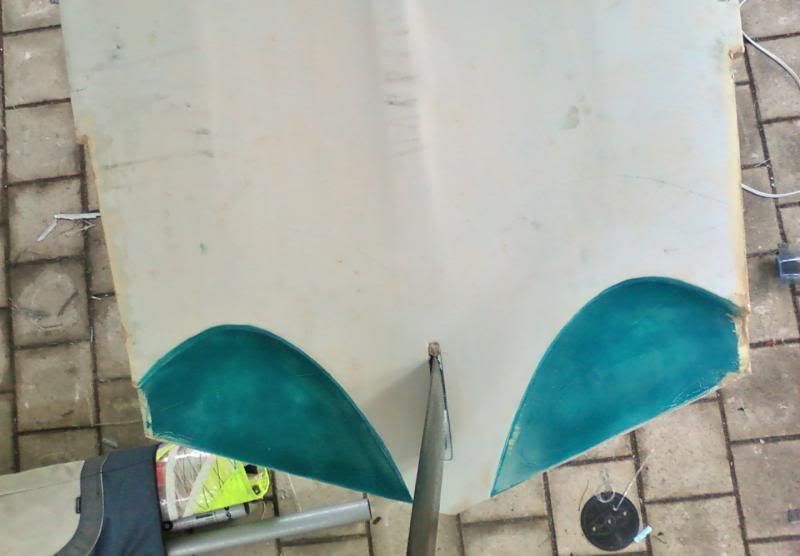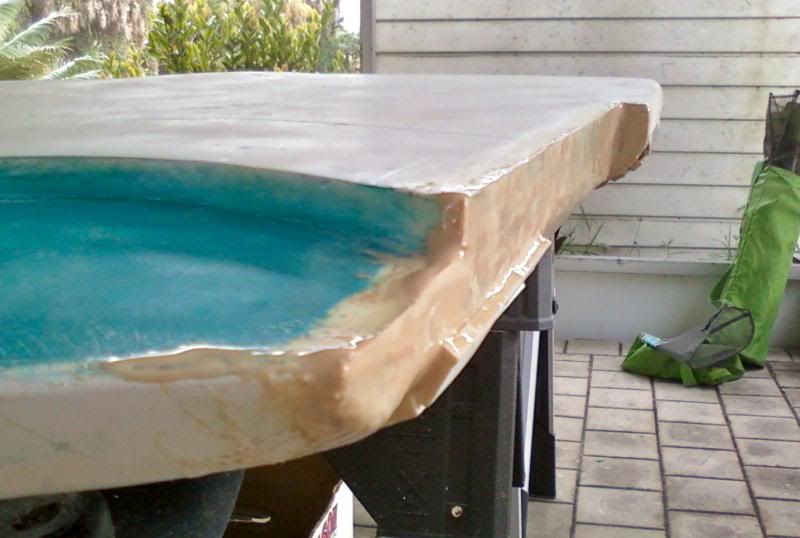My last windsurfing post was about breaking my big boom. Since the break coincided with the start of a busy semester of teaching, it took me a while to deal with it. I would tinker with it for an hour or so, then hit a setback, then have to leave it for days to keep up with real life things. The downtime was prolonged by my decision to concurrently attempt liposuction on my formula board; narrowing the tail section 5 cm by cutting "wingers" off the sides.

To stay sane in the meantime I sneaked a few paddleboard sessions in flat water or barely-catchable waves. These days I'll chase any wave over 1 foot high, because that's juuuust big enough to catch with the sup, and it's about the maximum size you can hope for in summer in West Florida. I also took the windsup out for a non-planing cruise with my 8.0 sail; the biggest sail I can rig without my big boom. That slow-motion windsurfing session really emphasized that I needed to get my big-sail toys working again.
Finally, this week, I got everything done. Here's a summary of what I did:
Boom-
*Shaved away the grip around either side of the break, and filed down the carbon fiber snags inside the break.
*Cut a ~7" chunk of narrow carbon tube from one arm of the tailpiece to be an internal splint for the break.
*Cut a ~12" section of a broken mast top to be an external splint for the break.
*Sanded and/or wrapped with fiberglass cloth as necessary to make both splints fit snugly.
*Epoxied the splints into place, and made sure the boom was aligned right by putting the tailpiece back in.
*Waited for it to harden then sanded the rough bits around the external splint.
 Board
Board-
*Made a mark at the corner of the tail, 1" in from original edge of the board.
*Measured 15" up from the corner of the tail and made a mark 1/2" in from the original edge of the board.
*Sawed a straight line between the marks with a jigsaw that I bought at Home Depot.
*Awkwardly sawed a bevel on the upper deck of the board at the edge of the new tail outline.
*Epoxied a couple layers of fiberglass over the exposed foam of the cut-out area.
*Spread some epoxy mixed with filler over the area to fair it and to glue on strips of foam padding for my heels.
*Sanded things as smooth as possible and painted over the modified area so it would match the rest of the board.


This morning there was a nice 10-14 mph breeze blowing, so I loaded up the gear and headed for the beach. I brought along my GPS so I could measure any changes in top-speed or upwind angle that my board modifications might have granted. I was low on gas, so I stopped for a fill-up at the Valero station. With a full tank, a fully loaded van, and a some nice wind, I was ready for ACTION!!!!
Then my @#$@#%$ piece of @#$% van wouldn't start. Rhonda came to the gas station to give me a jump but that didn't help. So I called AAA and had to watch my weekend windsurfing dreams roll away on a tow-truck. Sigh...







